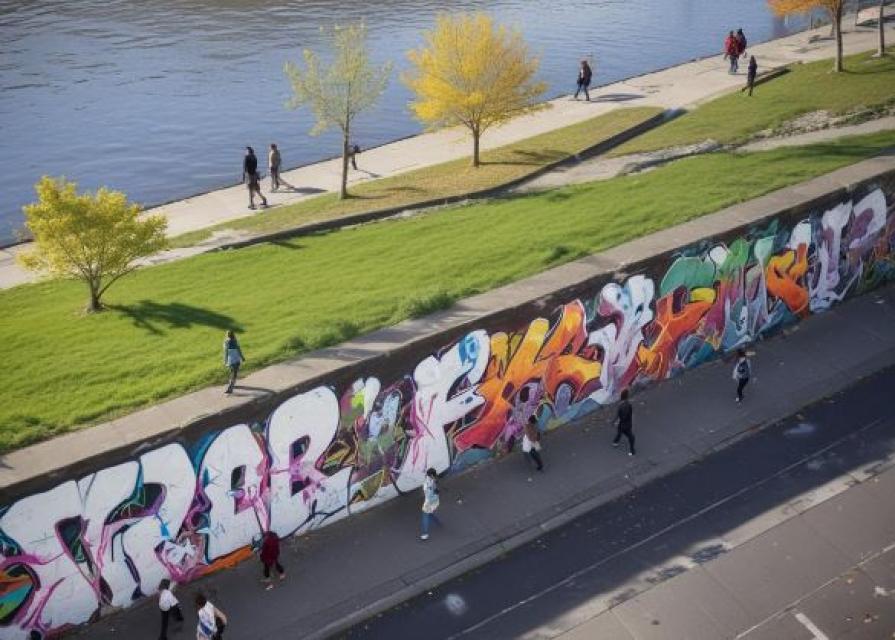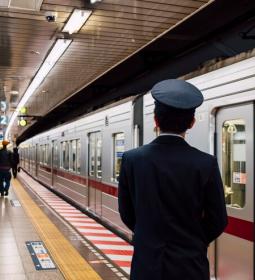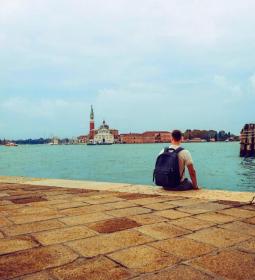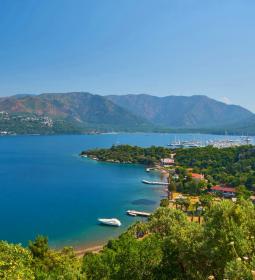The second half of the XX century was a series of crises and local wars, which were a reflection of the strategic confrontation between the largest superpowers - the United States and the USSR. The Cuban Missile Crisis, the Afghan Crisis, a whole series of Chinese and Korean crises, the Vietnam War...
Against this background, Berlin is undeservedly forgotten, and it was at that time that the world was closer than ever to a nuclear catastrophe. This seemed like a very real prospect, and the difficulties of joint government in Berlin, no longer divided into four sectors, but into two zones, could lead to the end of the world in the format of world war number three.
About what it was, until it ended - in our today's material.
A minute before the end of the world
At the end of November 1961, at half past five, a company of American tanks and motorized riflemen attached to them left at checkpoint Charlie, which divided Berlin's Friedrichstrasse into two parts. To the west was the western zone, where the Allied sectors were located, to the east - the Soviet zone; while East Berlin was the capital of the GDR.

American tanks stood ten meters from the border and waited. Soon they were met by the GDR and Soviet equipment, T-44 and T-54A tanks. Between the two lines of vehicles armed with a full set of weapons was no more than fifty meters. This went on for a day.
The equipment periodically replaced each other, starting the engines and rotating the towers, which did not add to the atmosphere of tranquility. At the same time, negotiations were held in the American capital between Robert Kennedy, the brother of the American president, and Khrushchev's liaison Georgy Bolshakov. Somehow they managed to come to an agreement, and the Soviet Union withdrew the tanks from checkpoint Charlie. Soon after, the Americans left. Journalists who flocked to Berlin for the smell of fried goods began to disperse to their countries, and the standing of tanks on Friedrichstrasse forever went down in the history of Europe, becoming the culmination of the Berlin crisis. However, it would be ridiculous to believe that this incident happened by itself – it was prepared for, it was prepared, in a word, it could not but be.
Birth of the Wall
Relations between the West and the East began to deteriorate even before Berlin was taken and the Reichstag was defeated. However, the climax was two points: the Fulton speech as a trigger and the berlin question. The city, like the rest of Germany, was divided into 4 occupation zones after the war. In the summer of 1948, a currency reform took place in the western zone, which, according to Stalin, was directed against the USSR. After that, the inhabitants of the East began to flee to the west, and the Soviet Union decided to close the border.
However, inside the military zone, surrounded on all sides, was West Berlin. After this decision, the city was blockaded, it began to be supplied with aviation through the famous air bridge. This went on for more than a year, and only in May 1949 the USSR allowed to supply Berliners by land, which allowed the townspeople to return to normal existence.
These events are considered the first in a series of Berlin crises. The resolution of the situation did not help to relieve tension in diplomatic relations between the two countries, on the contrary, it only got worse.
The USSR and the United States did not have a common model of the future for Berlin. Khrushchev proposed to make Berlin an open city, and the Americans and their allies believed that after that the city would be annexed by the GDR. Khrushchev was infuriated by this: he believed that the joint Anglo-Franco-American zone of occupation called into question the sovereignty of East Germany – he believed that a single state could and should enter the orbit of influence of the USSR.

In addition, the economic gap between the FRG and the GDR was becoming larger, and the border crossing between the sectors of Berlin, which was not at all limited, became an excellent opportunity to flee the country. In 1960, 200,000 people fled through this canal, and from 1949 to 1960, three and a half million East Germans chose the decaying West. In addition, there was a factor of work in the western sectors: they paid better there, it was possible to buy scarce goods, which in itself, firstly, "corrupted" the inhabitants of the city, and, secondly, economically supported the capitalist model.
A solution was needed – and it was found. In August 1961, the Ministry of Internal Affairs and the security service of the GDR, under the cover of the Soviet army, closed the border between parts of the city. First, 155 kilometers of the border strip were fenced with barbed wire, and then they began to build a concrete wall with watchtowers, machine gunners and a control strip combined with an anti-tank ditch.
West Berlin turned into a besieged fortress with the ability to travel to the main part of the country. Even the subway was divided into two autonomous systems. Thousands of East Berliners could no longer get to work. The propaganda of socialist Germany called the strange structure an obstacle in the way of western militarists, a defensive line of anti-fascism. The wall came as a shock to Western countries, but it was also perceived as evidence of the defensive strategy of the USSR. True, the townspeople did not like it, the parallel between the wall and the camp fence was painfully strong.
True, the United States then did not interfere, despite the immorality and criminality of the wall as such. That is, of course, they felt sorry for the showcases of capitalism in the heart of the Warsaw Pact, but it was rather an ideological question: it was possible to get to Berlin, there was access, and the townspeople still chose the mayor and the city council.
The wall was built in a matter of days, and it stood for 28 years and another 88 days, being the most striking symbol of Europe divided into two parts. When crossing this line, up to one and a half thousand people died: shot, beaten, died of a broken heart.
Crescendo
The appearance of the wall was the first act of the drama. Such a demonstration could not remain unanswered: NATO countries increased defense budgets, and two new divisions of the US Army appeared in West Germany.

In August, the authorities of the GDR closed the border crossings, leaving one - the ill-fated "Charlie". And around West Berlin, a hundred-meter neutral strip was equipped. For seven days after these events, the situation developed on an increasing basis: first threats to the air corridor and the suspension of demobilization, then mobilization in the United States. And on September 1, the USSR tested the largest atomic bomb in the world on Novaya Zemlya...
No one wanted to stop, it seemed a little more – and a new war would break out.
At the end of October, border guards on the Charlie refused to let the head of the US military mission in West Berlin, Alan Leitner, who was traveling to the theater located in East Berlin, which contradicted the conditions for the division of Berlin, defined at the conference in Potsdam in 1945. This was considered a provocation. The Americans began to prepare for the demolition of the fences with the help of bulldozers, but, fortunately, this idea was abandoned: someone decided that the USSR would not allow unauthorized demolition, and escalation would occur. Then the Americans bombarded the USSR with requests: what is it, why is entry restricted? The USSR answered: they say, we stopped the provocation of the American military, and what is wrong?
After that, a confrontation unfolded at the checkpoint: the Soviet border guards violated the agreement of 1945, not letting the Americans pass, and they, in turn, tried to disrupt this whole case with truths and untruths. By the end of October, the Americans began to use tanks to escort vehicles entering West Berlin. That is why the T-54 was brought out to meet them halfway, and only the willingness of the top leadership to reach compromises made it possible to save the world from nuclear war.

After the equipment was withdrawn, the situation became less threatening, although the Cuban Missile Crisis was just around the corner. As a result, the wall became a reality – undesirable, unpleasant, but inevitable. Another symbol of the Cold War, against which in June 1963 President Kennedy said: I am a Berliner (although he did not know the language well, so he amused all the inhabitants of the city by the fact that he was a Berlin donut).
The wall in Berlin collapsed in November 1989, in a matter of days. This decision became a landmark: from now on, the world was different, the threat of nuclear war at the behest of Mikhail Gorbachev went to the background in order to almost completely dissolve into oblivion... Unfortunately, the poisonous teeth of the dragon gave new shoots, although not in Berlin.
A few fragments and the Charlie Border Crossing have become a Cold War museum and a popular tourist attraction, attracting hundreds of thousands of Berlin visitors.














